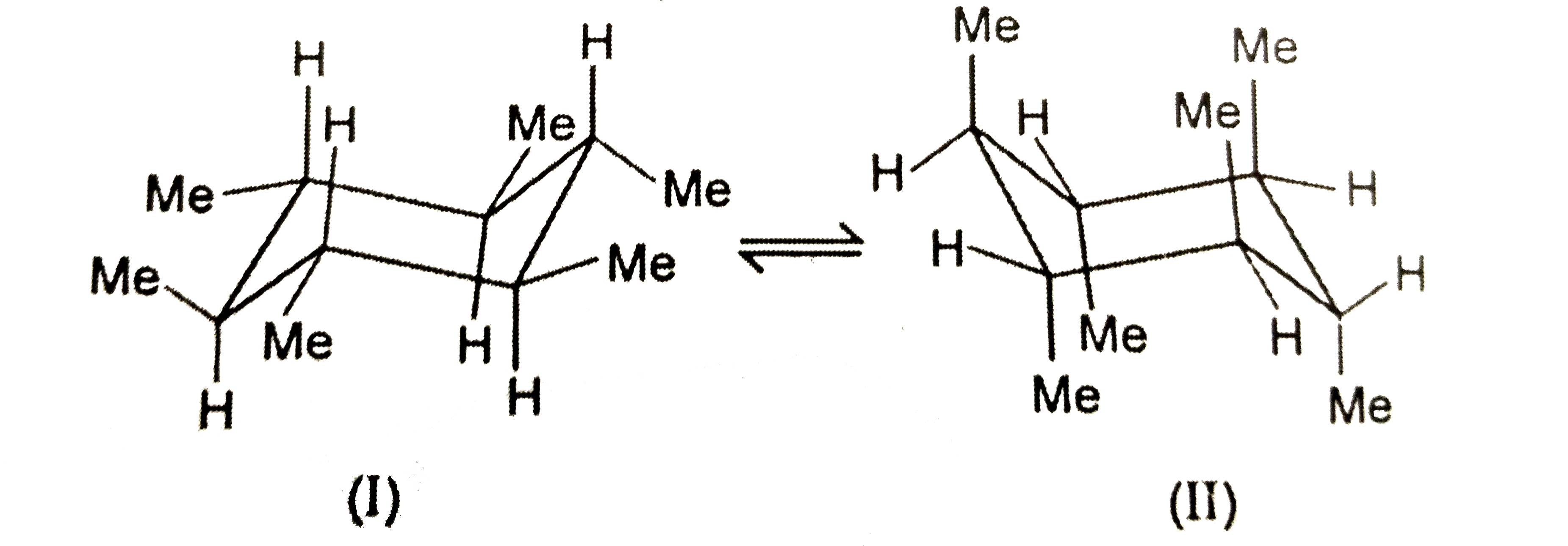What is diazotisation? Why are benzenediazonium salts more stable than alkanediazonium salts?
Step-by-Step Solution
Step 1: Define Diazotisation
Diazotisation is a chemical reaction that involves the conversion of primary aromatic amines (R-NH2) into diazonium salts (R-N2^+). This process typically occurs when a primary amine reacts with nitrous acid (HNO2) or sodium nitrite (NaNO2) in the presence of a strong acid, such as hydrochloric acid (HCl). The general reaction can be represented as follows:
R−NH2+HNO2→R−N2++H2O
Step 2: Explain the Formation of Benzene Diazonium Salts
When a primary aromatic amine, such as aniline (C6H5NH2), undergoes diazotisation, it forms benzene diazonium salts (C6H5-N2^+). This reaction is favored due to the stability of the aromatic system, which can delocalize the positive charge over the benzene ring.
Step 3: Compare Stability of Benzene Diazonium Salts and Alkanediazonium Salts
Benzene diazonium salts are more stable than alkanediazonium salts (R-N2^+ where R is an alkyl group) due to the following reasons:
1. Resonance Stabilization: Benzene diazonium salts benefit from resonance stabilization. The positive charge on the nitrogen can be delocalized over the aromatic ring, which stabilizes the molecule.
2. Inductive Effect: In alkanediazonium salts, the positive charge is localized on the nitrogen atom without any resonance stabilization. Alkyl groups do not provide the same level of stabilization as aromatic rings, making alkanediazonium salts less stable.
3. Decomposition: Alkanediazonium salts are more prone to decomposition, often releasing nitrogen gas (N2) and forming unstable products, while benzene diazonium salts can remain stable under similar conditions.
Summary
In summary, diazotisation is the process of converting primary aromatic amines into diazonium salts using nitrous acid. Benzene diazonium salts are more stable than alkanediazonium salts due to resonance stabilization and the ability of the aromatic ring to delocalize the positive charge.
Diazotisation is a chemical reaction that involves the conversion of primary aromatic amines (R-NH2) into diazonium salts (R-N2^+). This process typically occurs when a primary amine reacts with nitrous acid (HNO2) or sodium nitrite (NaNO2) in the presence of a strong acid, such as hydrochloric acid (HCl). The general reaction can be represented as follows:
When a primary aromatic amine, such as aniline (C6H5NH2), undergoes diazotisation, it forms benzene diazonium salts (C6H5-N2^+). This reaction is favored due to the stability of the aromatic system, which can delocalize the positive charge over the benzene ring.
Benzene diazonium salts are more stable than alkanediazonium salts (R-N2^+ where R is an alkyl group) due to the following reasons:
In summary, diazotisation is the process of converting primary aromatic amines into diazonium salts using nitrous acid. Benzene diazonium salts are more stable than alkanediazonium salts due to resonance stabilization and the ability of the aromatic ring to delocalize the positive charge.
Topper's Solved these Questions
- ORGANIC COMPOUNDS CONTAINING NITROGENBOOK - PRADEEPCHAPTER - ORGANIC COMPOUNDS CONTAINING NITROGENEXERCISE - COMPETITION FOCUS JEE (MAIN AND ADVANCED)/MEDICAL ENTRANCE SPECIAL (VII. ASSERTION-REASON TYPE QUESTIONS) TYPE - II
9 Videos
- HALOALKANES AND HALOARENESBOOK - PRADEEPCHAPTER - HALOALKANES AND HALOARENESEXERCISE - IMPORTANT QUESTIONS FOR BOARD EXAMINATION
22 Videos
- P-BLOCK ELEMENTS BOOK - PRADEEPCHAPTER - P-BLOCK ELEMENTS EXERCISE - IMPORTANT QUESTIONS FOR BOARD EXAMINATION
25 Videos
Similar Questions
Knowledge Check
A: Arene diazonium salts are more stable than alkane diazonlum salts.
R: Positive charge is dispersed on ring in arene diazonium salts.AIf both Assertion & Reason are true and the reason is the correct explanation of the assertion, then mark (1).BIf both Assertion & Reason are true but the reason is not the correct explanation of the assertion, then mark (2)CIf Assertion is true statement but Reason is false, then mark (3)DIf both Assertion and Reason are false statements, then mark (4)Diazonium salts are stable at ______ temperature .
A5 KB10 KC278 KD25 KWhich of the following diazonium salt is most stable ?
Ap−Nitrobenzenediazonium chlorideB2,4−Dinitrobenzenediazonium chlorideC2,4,6−Trinitrobenzenediazonium chlorideDp−Methoxybenzenediazonium chloride
(a) Write the reactions involved in the following :
(i) Hofmann bromamide degradation reaction.
(ii) Diazotisation .
(iii) Gabriel phthalimide synthesis
(b) Give reasons :
(i) (CH3)2NH is more basic than (CH3)3N in an aqueous solution.
(ii) Aromatic diazonium salts are more stable than aliphatic diazonium salts .
View Solution(a) Write the reactions involved in the following :
(i) Hofmann bromamide degradation reaction.
(ii) Diazotisation.
(iii) Gabrieol phthalimide synthesis.
(b) Give reasons :
(i) (CH3)2NH is more basic than (CH3)3N in an aqueous solution.
(ii) Aromatic diazonium salts are more stable than aliphatic diazonium salts.
View SolutionWhich one is more stable and why?

View SolutionAromatic diazonium salts are more stable than aliphatic diazonium salts. Why ?
Such a charge delocalisation is not possible in aliphatic diazonium salts and hence they are less stable than aromatic diazonium salts.
View SolutionWhich of the following diazonium salt is most stable ?
View Solution
